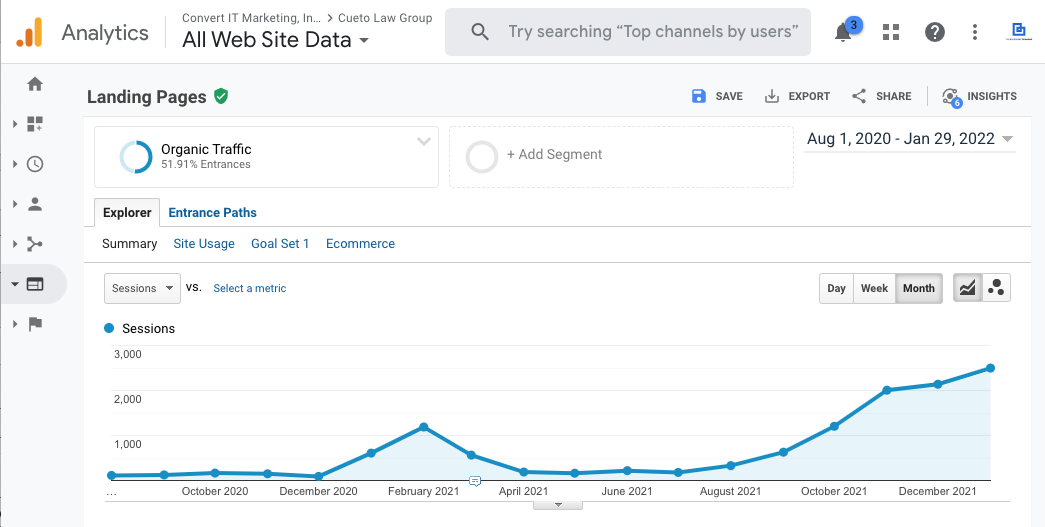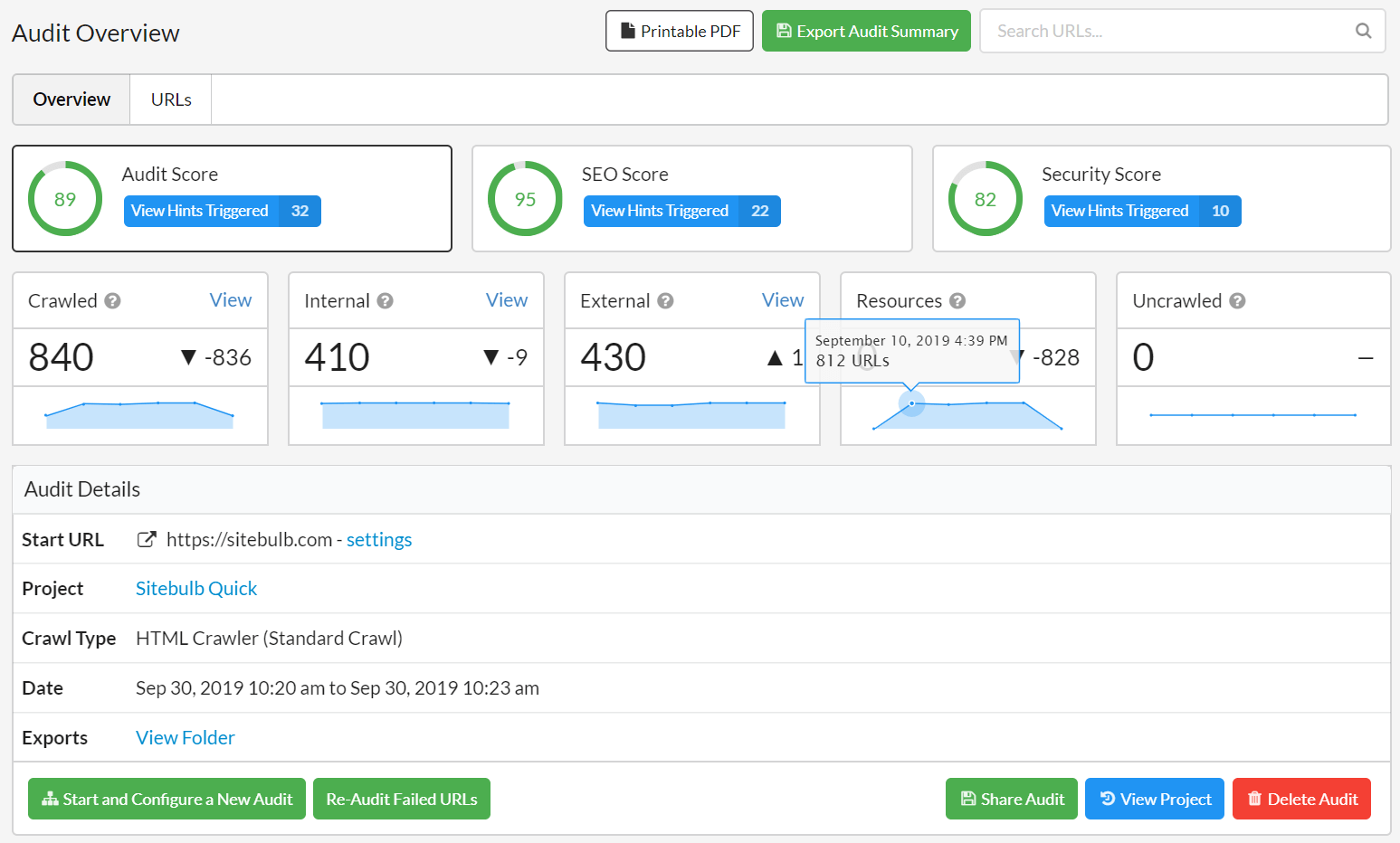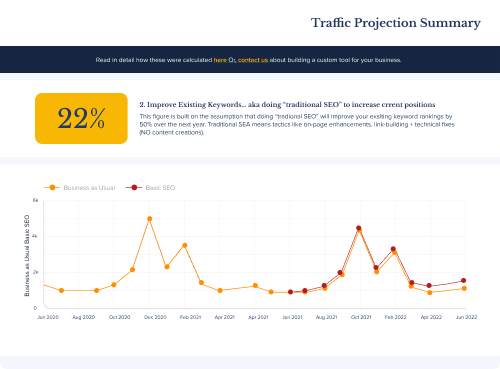Legal SEO is brutally competitive.
Fighting for rankings at the top of Google can be a frustrating (and expensive) process.
Over the last 10 years we’ve perfected that process – we’ve helped countless law firms get more customers from Google.

A screenshot of the increase in Google traffic for one of our law firm clients, Cueto Law Group.
Within the legal industries, there’s nuances. A DUI attorney requires a slightly different approach than a divorce attorney.
In this post, we’re going to break down the specific process of how to rank an immigration attorney’s website.
Let’s get into it.
The 3 part SEO process
For demonstration purposes, we’ve chosen to use the website of George Giosmas, an immigration attorney in Hollywood, Florida.

Our analysis always focuses on the 3 core parts of an SEO strategy:
- Technical SEO
- Content (web copy, landing pages, blogs)
- Links (also known as backlinks)
Before we go into the results, let’s review a few key goals to focus on.
Campaign goals
For an immigration attorney wanting to win new clients and increase revenue, the goals of SEO are:
- Increase search engine rankings for bottom-funnel keywords (In this case: immigration attorney South Florida and related keywords). Web pages at the bottom of the funnel play a key role in converting web visitors into customers.
- Rank higher in search engines for top-of-the-funnel keywords: Generate more warm inbound leads. Top-of-funnel keywords/search terms help you reach more people actively looking for your services.
- Increase reach and brand awareness in the local market. Make more potential customers aware of your services (e.g. with content, placement on websites, and other tactics we cover in this article).
We show you how to improve your SEO, increase web traffic, and get more clients using this example.

You can do a lot of this yourself. Or you can work with agencies, such as WEBRIS, to get the results you need.
Let’s dive in, starting with a technical review.
1. Find and fix technical roadblocks
At WEBRIS, we always start every SEO Sprint™ with a technical SEO review.
We do this because if a client’s website has technical problems preventing them from getting web traffic, these need fixing before we can take action to increase traffic using SEO strategies, tactics, and tools.
We use Sitebulb, a website crawling tool that helps us understand how search engines view a website.

When we dump George Giosmas website into the software, we’re looking to analyze a few things:
- Are the pages being crawled and indexed by Google?
- Are there misused page directives (canonical tags, NOINDEX tags, etc)
- Are there any 404 error pages or broken links?
- Are there any 301 redirects?
- Are there any broken backlinks? Ahrefs is a great tool for checking this.
- Are any of the pages thin on web copy or no longer relevant?
Most legal websites are smaller in size and generally don’t have a ton of technical issues.
The Giosmas law is no different – no major red flags, aside from blog content not making it into Google’s index.
Now we review the content (web copy, content on pages, articles). There’s a good chance that’s the main reason this website isn’t getting enough traffic.
2. Build out proper page ecosystem
Google wants to rank website’s that are structured properly according to their Webmaster Guidelines.
When you take these Guidelines and apply them to the context of a legal website, this is the high level structure to follow:

Giosmas Law uses a top level navigation and a side (faceted) navigation covering all of their practice areas.

While we don’t have a major issue with this, we would prefer to see a folder structure organizing practice areas:
- https://www.giosmaslaw.com/practice-areas/
- https://www.giosmaslaw.com/practice-areas/deportation
- https://www.giosmaslaw.com/practice-areas/green-cards
- https://www.giosmaslaw.com/practice-areas/visas
This gives the website a more comfortable structure to add more content to the website, including attorney pages, case pages and testimonial pages.
3. Improve “on page” elements for key pages
Practice area pages need to satisfy 2 goals:
- Provide context and authority to Google to rank high in searches
- Convince web visitors to reach out to hire your firm.
On the website we audited, these pages were incredibly thing and need much more depth in order to rank well.

Here’s a quick summary of our recommendations on how to improve on page performance:
- Build out pages with bottom-funnel keywords to convert more web visitors
- Improve the use of subheadings, internal links, and persuasive web copy
- Increase the amount of text/copy on the website
- Add some personality: images, videos, testimonials
- Go up funnel: Get more traffic from Google with search-intent focused keywords and content
People scan and don’t read every word. But search engines do.
More text — known as long-form content — contributes to higher rankings in search engines. It’s not that Google looks at a page’s word count and decides it should rank higher.
No, it’s a little more complicated. Search engines always are. However, pages with more text (over 2,000 words), contributes to higher rankings in SERPs.
Pages with more text tend to be more comprehensive. And for search engines, that’s a big plus. It shows you’re an expert on a particular topic, such as a “Green card attorney.”
Longer-form articles are also particularly helpful if you want to pick up backlinks, which help websites rank higher.
4. Use scannable subheadings, internal links, and make web copy more persuasive
On service pages (and blogs), subheadings need to follow a clear, logical structure.
People don’t read every word. They scan quickly, usually on a phone.

So,
- Sub-headings should clearly map out and explain what you want to say. Guiding web visitors to take the action you want: call, email, or send a message.
- Internal links help Google rank websites higher. Use keywords to anchor the links, then map out links between pages and blogs. Make good use of these.
Web copy should always be persuasive, especially on service pages. Every line and sub-header should encourage people to pick up the phone, send an email, or fill out a form.
6. Show some personality: add images, videos and testimonials
We all know people buy from people.
What made you read this article?
Maybe you’ve seen some of my videos on YouTube, TikTok, Facebook, or pictures on Instagram. You were curious, and wanted to learn more.

That’s the power of video!
We always encourage clients to start recording videos and posting them online. Videos put a face to the name. Add some personality. All you need is an iPhone, they record in 4K, and simple editing software.
Check out Michelle Murphy, Esq. on TikTok, she’s amazing!
Use images too — of you working at your desk, meeting clients, in court —to show potential clients more. Plus, make use of testimonials. Publish as many as you can get from happy clients.
7. Go up funnel: Get more traffic from Google with search-intent focused keywords and content
At the top of the funnel, you’re trying to pull in traffic from questions people are asking in search engines, such as:
- “How do I get a green card if I’m from Cuba?”
- “Who’s the best green card attorney in South Florida?”
- “Immigration attorney Miami”
Attorneys are hired from referrals and recommendations. This also means friends and family are searching for attorneys to help their relatives and friends.

Create content that helps drive those referrals, using top of the funnel content.
Answer questions people have around immigration to capture and drive more traffic from the top of the funnel.
Now, onto the other tactics we know would increase traffic for immigration attorneys.
8. When you’ve got international customers, create content in their language
In this case, the majority of this attorney’s clients’ speak Spanish as their first or second language.
As 90% of his customers are from South America, Cuba, Venezuela, and other Spanish-speaking countries, this is an awesome way to pick up Spanish long-tail keyword traffic.
Use this to your advantage. Most attorneys won’t, immediately making your services more accessible in your customers’ language.
Here’s how an immigration attorney can pull in more sales leads from Spanish speaking customers:
- Write page in Spanish (or other languages, as needed)
- Create Spanish-specific pages: Setup a .es subdirectory
- Add ahref lang tag, and metadata in Spanish to show search engines you have Spanish pages for that audience
9. Use links to increase rankings and web traffic
Links are Google’s ways of registering votes in a massive online popularity contest.
For example, if Huffington Post included George Giosmas in a list of top 10 immigration attorneys in Miami, Florida, this would show Google that he’s one of the best. The backlink from the high-traffic Huffington Post would be a valuable ranking indicator.
Getting links (backlinks) isn’t easy for immigration attorneys, but here’s how to do it:
1. Fill out profiles on platforms and directories.
Go to legal directories. You can fill out a profile for free or very cheap, and even advertise. These establish foundational links — adding some much-needed oomph and credibility for your website in SERPs — and they might even drive some traffic and inbound leads.

Check out our guide to Avvo marketing here
2. PR.
For immigration attorneys, one of the best ways to get some free PR is to sign-up to Help a Reporter Out (HARO). This way, reporters know you’re an attorney worth contacting when they need a comment for an immigration story. It does take work, so this might be worth outsourcing.
3. Guest posting.
This is another highly-recommended way to pick up backlinks and increase your website’s position in SERPs. Perspective from a legal point of view. Pitch guest articles on legal websites and even other lawyers’ websites (where you both provide different services).
Backlinks help search engines rank websites higher. It’s one of the best ways to increase traffic and sales leads over time.
Focus on quality, not quantity. You’re doing well if you can land 20 – 30 links every year.
Before pitching to get links, you need to invest in high-quality top-of-the-funnel content.
It’s a lot harder to get links to commercial pages. However, if you’re publishing high-quality, top of the funnel search-intent focused long-form articles, then these are assets others will want to link to.
10. Optimize Google My Business for local searches
George Giosmas is based in Hollywood, Florida. Location-based content in Google would help more people looking for an immigration attorney in that area find him.
Local Search runs on a different algorithm than the core search engine algorithms. Local Search is driven by results shown on Google Maps and Google Business Profile.
If you want to rank in these search results, do the following:
- Fill out your details on Google Business Profile;
- Make sure to include your website, phone number, a description, and the services you offer;
- Put your address on the map;
- Upload photos (20 or more, if you can, to pull in more traffic)
- Ask customers for reviews on Google
Reviews help with local search rankings. It shows Google you’re an active business and that customers are happy with your services.

Reach out after helping clients. You can automate this or send manual emails. Once you’ve got positive reviews, publishing these on your website is equally helpful. This acts as social proof, showing new potential clients why they should become customers.
You can also bid for adverts within Google Map listings, using Local Service Ads via Google Ads. Start small. See what works. Or work with an agency to get an online advertising campaign launched.
And there we go. We hope you found this helpful. If you’re an immigration attorney wanting to increase web traffic and sales leads, this is how you use SEO to get better results.
Key Takeaways: 10 ways immigration attorneys can use SEO to win more clients
- Ensure your website doesn’t have any technical issues (nothing preventing search engines from ranking pages)
- Use content to convert more clients at the bottom-of-the-funnel (persuasive copy, videos, pictures), especially on service pages
- Use SEO keywords and high-quality content to pull in more traffic at the top of the funnel
- Improve the use of subheadings, internal links, and persuasive web copy
- Increase the amount of text/copy on the website (pages and blogs with 2,000+ words do better)
- Show some personality: images, videos and testimonials
- Use scannable subheadings, internal links, and make web copy more persuasive
- Go up funnel: Get more traffic from Google with search-intent focused keywords and content
- Establish links to show Google your website is worth ranking higher, increasing traffic (using directories, guest posts, and PR)
- Optimize for Local Search
- Translate your website into another language (e.g., Spanish)
Immigration attorneys: Do you want more clients?
Get started with a FREE Website Traffic Analysis to see how we can deliver the traffic and results you need.




















